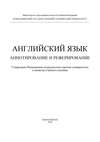Kitabı oku: «The American Duchess», sayfa 4
2
Ich Dien

After their honeymoon, Wallis and Ernest moved into a small hotel in London while they searched for a suitable home. Ernest’s sister, Maud, helped them to find a furnished house in Upper Berkeley Street, which they rented for a year. Wallis, a natural and dedicated homemaker, was keen to secure an unfurnished property on which she could put her decorative stamp.
Initially, Mrs Simpson was lonely in London, knowing no other Americans. Unaccustomed and resistant to the formality of English mores, she felt like ‘a stranger in a strange land’. Her sense of isolation heightened in October 1929 when she learned that her mother was seriously ill. Alice had been diagnosed with a blood clot in her brain. As Ernest could not leave his business, Wallis crossed the Atlantic alone. She spent three weeks with her ailing mother, who died shortly after Wallis returned to London. The ‘sadness’ that Wallis carried inside was ‘a long time lifting’. She grieved bitterly for her adored mother, whom she felt was the only person who truly understood her.
Soon a welcome distraction presented itself. That winter, Wallis found a first-floor flat that both she and Ernest liked in a mansion block on George Street, near Marble Arch. She set about decorating the flat at Bryanston Court with her inimitable flair. She was influenced by two design legends: Syrie Maugham, wife of novelist Somerset Maugham, and her good friend Elsie de Wolfe. Professional rivalry simmered between these two eccentrics as to who was the greater visionary. Both were ‘ultra chic’, creating light avant-garde rooms – the antithesis of heavy, dark Victoriana. Wallis enlisted Syrie Maugham’s talents at Bryanston Court, while de Wolfe helped shape her later homes in France. Maugham, who pioneered white furniture and white walls against which were showcased Provençal antiques, stripped and painted everything with her secret craquelure technique. From Maugham’s workshops Wallis commissioned a dozen dining-room chairs with tall backs, upholstered in white leather and studded with nails. This was considered daringly modern. An Italian dining table, Adam sideboard and console received the Maugham treatment; they were painted blue-green and white. According to Wallis, ‘when the table was laid for the first time and the candles lighted, the effect was soft and charming’. Wallis always chose a mirror-topped table, the centre decorated with glass fruits and a silver candelabra at each end. The table service was pink china; one of her most prized possessions was the dinner service inherited from her grandmother. Unconventionally, she served her consommé piping hot in small cups of black Chinese lacquer, with tiny lids. To Wallis, design and presentation was nothing less than a moral issue. She adopted both Elsie de Wolfe’s streamlined aesthetic and her credo: ‘What surer guarantee can there be of a person’s character, natural and cultivated, inherent and inherited, than taste?’
Ernest, proud of his wife’s exceptional talents as a hostess, was pleased with both the style of their home and Wallis’s eye for detail. She was always moving furniture into new positions, changing things around in her efforts to perfect a room’s look. This continued throughout her life, to her last home, the regal villa she shared with the Duke of Windsor in the Bois de Boulogne in Paris.
In her early days in London, Wallis, far from being able to exhibit largesse in her entertaining, had to budget cautiously. Most of her correspondence to her Aunt Bessie at this time focuses on the trials of trying to find the right cook and of financial concerns. Ernest was meticulous in his housekeeping. One evening a week, he demanded that Wallis show him her weekly expenditures. He would run his finger down the list, scrutinising each purchase. Wallis ran the house and bought her clothes on a weekly stipend from Ernest. Accustomed to working to a fiscal limit, she discovered that life in Britain was cheap by American standards. If she found herself under budget, she would splurge at Fortnum & Mason on a jar of caviar, brandied peaches or, as a special treat, an avocado.
Wallis shared Elsie de Wolfe’s obsession with serving guests food that was the same size, driving her butcher and fishmonger to distraction sourcing six or eight identical trout or grouse; even vegetables were laid out on the plate with military precision. Like her mother, Wallis prided herself on serving only the most delicious food. The Prince of Wales said of his first visit to her ‘small but charming flat in Bryanston Square’, that ‘everything in it was in exquisite taste and the food, in my judgement, unrivalled in London’. Wallis ‘is the best housekeeper I know’, declared Elsa Maxwell. ‘She is as skilful as a Japanese professional in arranging flowers. She has perfect taste in food as well as furniture and in those little details of forethought and care that mark an imaginative hostess. For instance, last time I lunched with her I noticed that she had found the most enchanting little round porcelain pots with covers to contain the butter and at the bottom, there was ice to keep it firm.’ According to Lady Pamela Hicks: ‘She was the most marvellous hostess. Her houses were perfection. At giving parties and serving food, she was the best.’ When she was the Duchess of Windsor and could afford it, Wallis would spray floral centre pieces with Diorissimo perfume.
Wallis’s reputation as a skilled hostess spread around the Simpsons’ London set. Naturally, she and Ernest were suitably excited when, having bumped into the Prince of Wales a few times at Thelma Furness’s, he accepted their invitation to Bryanston Court in January 1932. Wallis decided to serve a typical American dinner: black bean soup, grilled lobster, fried chicken Maryland and a cold raspberry soufflé. As a concession to her English guests, she followed it with a savoury of marrow bones. Typical of Wallis’s dignity, she was ‘bursting to tell the fishmonger and green grocer’ whom she was hosting but ‘had acquired too much British restraint’.
Ten sat down to dinner that January evening, with the prince at the head of the table and Ernest at the foot. Wallis wrote to her Aunt Bessie afterwards, on Sunday 24 January, thanking her for sending butter pat moulds with the Prince of Wales’s feathers on them. ‘Darling – the candles arrived and are grand. I enclose cheque. I can’t accept everything from you. We (meaning Cain* and self) loved the butter pats, especially the one with HRH’s feathers on it. It was a shame it didn’t arrive for use the night he dined here which by the way passed off pleasantly the party breaking up at 4 a.m., so I think he enjoyed himself.’
The prince paid Wallis the compliment of asking her for the recipe of her raspberry soufflé. The following week, he repaid her hospitality with a prized invitation for the Simpsons to stay as his guests for the weekend at Fort Belvedere, his country residence in Surrey. In 1930 the king had given Edward a grace-and-favour property on Crown lands, bordering Windsor Great Park. This ‘castellated conglomeration’ had been built in the eighteenth century by William, Duke of Cumberland, third son of George II. Eighty years later, the architect, Sir Jeffry Wyatville, added a high tower which gave the impression of an ancient castle in a forest. From the moment he saw it, Edward adored this ‘pseudo-Gothic hodge-podge’, despite its wild, untended garden and excess of gloomy yew trees. Fort Belvedere became his first proper home; his only other residence, York House, was more like an office. Edward poured all his energies into doing up ‘The Fort’, as it became known.
‘It was a child’s idea of a fort,’ said Lady Diana Cooper. ‘The house is an enchanting folly and only needs fifty red soldiers stood between the battlements to make it into a Walt Disney coloured symphony toy.’ Of her host, she said: ‘The comfort could not be greater, nor the desire on his part for guests to be happy, free and unembarrassed. Surely a new atmosphere for Courts?’
Edward renovated the inside, modernising with gusto – creating spaces entirely different from the musty royal houses of his childhood which had made him feel so unwell he could not eat. Each bedroom had its own bathroom – unheard of then in British country houses – and he added showers, a steam bath in the basement, built-in cupboards and central heating. Outside, he felled the yew trees to let in light and air. A muddy lily pond below the battlements was transformed into a swimming pool and acres of dank laurel were cleared for rare rhododendrons. Winding paths cut through fir and birch trees adding to the attractive woodland setting. He also improved and developed the Cedar Walk, a sweeping avenue lined by ancient cedar trees stretching from below the terrace to the edge of his property, which became one of his favourite places to walk. Later he added a private aerodrome in the grounds (he was patron of the London Flying Club in 1935) and would ferry friends in and out of Belvedere in his de Havilland Dragon Rapide biplane, which he had painted in the colours of the Brigade of Guards.
‘The prince was himself’ at the Fort, Thelma, Lady Furness, wrote in her memoirs. ‘He was free from any obligation to maintain the formalities of his official position. He pottered in the garden, pruned his trees, blew on his bagpipes. We entertained a great deal, but our guests were always the people we liked to have around – there were no dignitaries, no representatives of State and Empire.’ Of the Fort, Edward said: ‘I came to love it as I loved no other material thing – perhaps because it was so much my own creation.’ Guests were pressed into arduous physical labour; hacking out undergrowth and pruning trees. Edward also discovered a love of Windsor Castle, six miles away, of which he had said as a boy ‘the ancient walls seemed to exude disapproval’. Now his reverence grew for the immense grey pile which Samuel Pepys once described as ‘the most romantic castle that is in the world’. Edward would take weekend guests to browse the library and show off the Rubens and Van Dycks in the state apartments on Sunday afternoons.
The Fort became the prince’s sanctuary, a place where he could dispense with private secretaries and equerries. He considerately refused to keep staff up late at night, despite the early hours that he often enjoyed and if he returned home at dawn, let himself into the property with his own latch key. Unthinkably modern for a future monarch.
Wallis and Ernest set out for the Fort late on the Saturday afternoon, timing their pace to arrive, as invited, at six. It was dark when the car crunched up the gravel driveway. Before they could come to a stop, the prince had opened the door and was supervising the unloading of the luggage, a habit he enjoyed. Unlike the grandeur of Knole, the Kent home of the Sackvilles to which the Simpsons had previously been invited as weekend guests, the Fort struck them as remarkably relaxed. The prince led them into the octagonal hall, which had a black and white marble floor and eight bright yellow leather chairs in the eight corners. The drawing room, also octagonal, was more traditional; pine panelling, yellow velvet curtains, Canalettos and Chippendale furniture. The prince insisted on showing his guests to their room on the second floor. Diana Cooper wrote of her bedroom when staying there: ‘The stationery is disappointingly humble – not so the conditions. I am in a pink bedroom, pink-sheeted, pink Venetian-blinded, pink soaped, white-telephoned and pink-and-white maided.’ She did not comment on the gaudy Prince of Wales’s feathers engraved into every bed’s headboard.
When Wallis and Ernest arrived downstairs for cocktails, they were surprised to see the prince sitting on a sofa, his head bent over a large flat screen. His right hand plied a needle from which trailed a long coloured thread. At his feet were his two cairn terriers, Cora and Jaggs. Catching Wallis’s look of incredulity at the sight of the Prince of Wales doing needlepoint, he laughed, rising to greet her. ‘This is my secret vice,’ he explained, ‘the only one, in any case, I am at any pains to conceal.’
He explained to Wallis that he had learned to crochet from his mother as a young boy. At half past six each evening at Sandringham, Edward and his siblings were called in from the school room and sent to their mother’s boudoir where they would sit at her knee, while she crocheted or embroidered. Queen Mary taught them gros point, which Edward kept up, and perfected while recovering from a riding accident. He returned to this hobby during his time on the Western front in France. On long car journeys he crocheted to kill time. He later said that he was ‘understandably discreet about my hobby at first. It would hardly have done for the story to get around that a major general in the British Army had been seen bowling along the roads behind the Maginot Line crocheting.’
While the women all wore simple evening dresses, Edward sported a kilt in Balmoral tartan and produced a small cigarette case from his silver sporran. After cocktails, the small party went through to the dining room – the wood-panelled room seating only ten – where they ate oysters from the Duchy of Cornwall oyster beds, followed by roast beef and salad, pudding and a savoury. After coffee in the drawing room, Edward taught Wallis to play a card game called Red Dog, while others attempted a complicated jigsaw puzzle that was laid out on a long table in front of the main window. Dancing followed in the hallway. Suddenly, the prince tired. Before going to bed, he announced the rules of the Fort: ‘There are none. Stay up as late as you want. Get up when you want. For me this is a place of rest and change, I go to bed early and get up early so that I can work in the garden.’
The following morning, when the maid bought Wallis breakfast to her room, she was informed that His Royal Highness had finished his an hour before and was in the garden. When the Simpsons entered the drawing room, they saw the prince on the terrace outside in baggy plus fours, a thick sweater, hair tousled, hacking at the wild undergrowth with a machete-like billhook, dogs at his heels. Ernest Simpson, not a natural athlete, was ill-equipped to respond to the prince’s insistence that all guests help him wage war against the dreaded laurel bushes. ‘It’s not exactly a command,’ a fellow guest informed Ernest, ‘but I’ve never known anybody to refuse.’ Crossing the lawn, brandishing murderous-looking weapons, the house party resembled more a band of revolutionaries ready to do battle than an elite group of guests staying with the Prince of Wales at his country retreat. After two wearying hours in the winter chill the guests returned for a fortifying hot and cold buffet lunch laid out in the dining room. That afternoon, the prince took Wallis and Ernest around his home, even showing them his bedroom, on the ground floor, off the hall. It was spacious and charming with red chintz curtains framing spectacular views of his beloved garden.
Later that afternoon, the prince went for a tour outside with his gardener. When he returned, he disappeared to the basement. Thelma explained to a perplexed Wallis that at the same time every day he liked to take a steam bath, and was as proud of having installed this as he was of his central heating. He later appeared wearing a bright yellow polo neck, his face flushed red, yet ‘radiating utter contentment’.
As an original thank-you note, Wallis and Ernest composed the prince a jaunty poem on their return to Bryanston Court. As etiquette demanded, it was signed by Wallis only.
Sir –
Bear with me and do not curse
This poor attempt at thanks in verse.
Our weekend at ‘Fort Belvedere’
Has left us both with memories dear
Of what in every sense must be
Princely hospitality.
Too soon the hours stole away,
And we, who would have had them stay,
Regretful o’er that fleeting slyness,
Do warmly thank Your Royal Highness.
But with your time I make too free –
I have the honour, Sir, to be
(Ere too long my poetic pencil limps on)
Your obedient Servant,
Wallis Simpson.
After their fairy-tale weekend, Wallis and Ernest returned to the real world. They did not see the prince for much of the rest of that year, 1932 – a year Wallis pronounced ‘dismal’. Ever preoccupied with worsening money worries, she wrote to her Aunt Bessie that Ernest’s shipping business was struggling as the world lay in the trough of the Depression.
Britain had also been suffering from the severe economic downturn. Hardest hit were the industrial and mining areas of the north of England, Scotland, Northern Ireland and Wales, where unemployment reached 70 per cent. Over the previous few years the Prince of Wales had made extensive tours of Tyneside, the Midlands, Lancashire, Yorkshire, Scotland and Wales. He visited hundreds of working men’s clubs and schemes for the unemployed, seeking out the areas of rawest poverty. Although he was sometimes met with sullen apathy, which perturbed him, the prince persevered, inviting himself into slums, eager that the people would not think the monarchy had forsaken them in their misfortune. In 1929 in Winlanton, Durham, he visited the house of Mr Frank McKay, a seventy-four-year-old miner, whose wife had just died. The prince offered his sympathies to the family and ‘expressed a wish to go upstairs to the room where Mrs McKay lay dead’. As he left, the miners cheered him on the way back to his car. George Haynes, General Secretary of the National Council, remembered the Prince of Wales’s ‘way of approach; his transparent interest and concern, and the immense regard people had for him. He had a charisma in those days which was unique.’ However, the prince was quickly marked down by the establishment as a ‘dangerous subversive’.
The prince would return from his public duties painfully aware that ‘there was always something lacking’. In spring 1932, King George V had what was for him, an uncharacteristically intimate conversation with his son. He told Edward that while he was still worshipped by the public, he could not expect to survive the erosion of his reputation caused by the increasingly damaging revelations surrounding his private life. The king cited Edward’s liaison with Lady Furness and asked his son if he had ever thought of marrying ‘a suitable well-born English girl?’ Strangely, the prince replied that he had never supposed it would be possible.
‘What he meant by this was that he liked these married women and he loved Americans,’ explained Hugo Vickers. ‘The prince loved golfing pros and tycoons. According to his Private Secretary he became like a little boy in their presence. He thought that English girls were boring and thought that zinging cocktail girls were what he liked. There was never any question in his mind that he would marry an eligible British girl.’
There were suggestions that Princess Ingrid of Sweden might make a suitable bride, but it was never seriously contemplated at York House or Buckingham Palace. Earl Mountbatten of Burma prepared a list of seventeen European princesses who were ‘theoretically possible’, ranging from the fifteen-year-old Thyra of Mecklenburg-Schwerin to twenty-two-year-old Princess Ingrid, but these were made with little conviction. No one who knew the Prince of Wales now believed that he would ever marry. The despairing king said to Stanley Baldwin: ‘After I am dead the boy will ruin himself within twelve months.’ He apparently later confided to the courtier, Ulick Alexander: ‘My eldest son will never succeed me. He will abdicate.’
This was a view shared by the king’s third son, Prince Henry, who became the Duke of Gloucester. ‘My brother and I never got on, I’m afraid,’ Gloucester later said of his relationship with Edward. ‘We had a hell of a row in 1927. I’d said to someone I didn’t think he’d ever be king and it was repeated. He said to me: “Did you say that or didn’t you?” So I said: “Well I’ve either got to tell you a lie or tell you the truth and I’m going to tell you the truth. I did say it and I still think it.”’
The prince’s equerry, John Aird, who succeeded Tommy Lascelles in this position, believed that the king and his family were misinformed about his son’s activities. He wrote in his diary: ‘I have been told that HRH’s behaviour is killing the king. If so I am very sorry, but feel that it is not probable and quite unnecessary.’ Lascelles had described the prince as ‘“an archangel ruined” – though ruined by what, God only knows’. John Aird, however, did not share this view. At fault, he felt, were the courtiers at York House eagerly relaying to the king ‘all the nasty gossip, which is very wrong of them and does no good’. Queen Mary’s official biographer, James Pope-Hennessy, who was given access to the entire royal family for the writing of his book, concluded sagely: ‘It is courtiers who make royalty frightened and frightening.’
However, those close to the Prince of Wales, the unholy trinity of the monarchy, Church and political establishment, had serious misgivings about Edward’s suitability as king. His views were regarded as not conservative enough and he did not seem to take to his official duties with the appropriate solemnity. His high-profile visits to areas of mass unemployment, highlighting the suffering of the labouring classes, raised political hackles during the Depression, while his chief activities – socialising, needlepoint, sewing and gardening – did not match well with contemporary ideas of kingship. There were also concerns about his ability to have children and provide an heir. Several who worked closely with him began to bandy about the word ‘mad’. His nervous tics, odd speech and constant fiddling with his cuffs did not help solidify his reputation yet while he could be extremely self-centred, often appearing detached from reality, he was certainly not insane. George V remained infuriated by his eldest son’s ways, especially his style of dress. The prince insisted on wearing a bowler hat on official visits to industrial plants, eschewing his father’s preference for a top hat. Yet this was a considered move not to further alienate himself from the workers, rather than as a snub to court etiquette. The king and his court dismissed any such attempt of Edward’s to modernise the style and approachability of the monarchy as anarchic.
The prince’s lack of conformity extended widely to his social circle. Edward’s friendship with the Hon. Diana Guinness (nee Mitford) and her lover, the MP and, from 1932, leader of the British Union of Fascists, Sir Oswald, raised questions of political impartiality and judgement. George V knew that the monarchy’s survival depended on maintaining its constitutional neutrality, whereas Edward appeared to be enthusiastically pro-German, at a time when his parents were going to great lengths to rebrand the royal family as British. Like many members of the British aristocracy in the early 1930s, the prince seemed to view fascism as the latest in political chic. However, Edward was considered too ideologically vacuous to have any genuine interest in a political creed, and his two political mentors, Winston Churchill and David Lloyd George, were both Liberals.
That Edward did not conform to court life, preferring a vigorous and flamboyant social life over the grey strictures of monarchial duty, was tantamount to treachery in the eyes of his advisors. In 1927, Tommy Lascelles said to Stanley Baldwin of the prince: ‘You know, sometimes when I am waiting to get the result of some point-to-point in which he is riding, I can’t help thinking that the best thing that could happen to him and the country, would be for him to break his neck.’ ‘God forgive me,’ Baldwin said. ‘I have often thought the same thing.’
Edward carried on with his private life, ignoring opprobrium, preferring to spend his time with the wealthy and self-made, as opposed to old school aristocrats. He enjoyed the company of rich Americans, such as Sir Henry ‘Chips’ Channon and Emerald, Lady Cunard. Emerald, widow of shipping heir Sir Bache Cunard, was an influential hostess and patron of the arts. Stanley Walker, editor of the New York Herald Tribune, wrote: ‘International society is not always difficult to crash. To be the guest of the Prince of Wales at his country house, Fort Belvedere, is regarded as a high honour. Many of the members of what is known in New York as the “international set” are accepted in London, and shuttle back and forth between England and America.’
During the summer of 1932, Wallis, who suffered from a physically nervous disposition – she felt her stresses in her stomach – had to return from a much anticipated trip to France and Austria with Ernest, due to a stomach ulcer. She later wrote: ‘I suppose that the ulcer came from nerves, as I always kept the day-to-day tensions of living bottled up inside me.’ Beneath her confident, sharp-shooting facade, Wallis nursed a frailty she was at literal pains to conceal. That autumn, Wallis and Ernest were twice invited to the Fort; once for tea and once for the weekend. By December, Wallis was in bed again as her stomach problems had flared up, in spite of careful attention to her diet. Her doctor advised her to drink only whisky or water for six months.
From early 1933, the Simpsons received more frequent invitations to the Fort. Wallis wrote to Aunt Bessie from Belvedere on Sunday 29 January. ‘It is cold for England now and since arriving here we have been skating out on the water with the Duke and Duchess of York.† Isn’t it a scream! Also you can imagine me out on the ice but due to having roller skated I have not been too bad. The Prince presented T[helma] and self with skates etc.’
Wallis’s bond with Thelma was strengthening. She wrote to Mary Kirk: ‘A friend of mine, Thelma Furness, is the Prince of Wales’s girl and I chaperone her when she goes out to Fort Belvedere to stay with him.’ Wallis described her surprise when Thelma arrived to drive her to the Fort, with long struts strapped to the side of the car. Thelma ‘just laughed and said that I would find out later’. It was after dinner that she found out. ‘The three of us came into the sitting room for coffee. On either side of the fireplace, where a grand fire was blazing, stood a comfortable chair and beside each chair stood something that looked like an artist’s easel. When I went closer and looked I found that each of these held a canvas on which was an unfinished piece of embroidery. When we had finished our coffee Thelma and the prince settled themselves down to work and I, sitting between them, was asked to read from a book Thelma handed me.’
Thelma encouraged the prince’s love of petit point. His first solo effort was a paperweight which he made for Queen Mary. It depicted the royal crown above her initials, ‘M. R.’, in gold. The prince had it mounted on a silver base and when finished, it was beautiful. He then progressed to sewing a backgammon table cover for Thelma.
The prince had a thoughtful, generous side. Every Christmas he bought all the staff at York House and the Fort a Christmas present. This meant buying and wrapping many hundreds of gifts. An eccentricity of his was to involve all his weekend guests during the run-up to Christmas in sessions of after-dinner wrapping. ‘All the guests became an informal task force,’ recalled Thelma. ‘Scissors, paper, ribbon, string were issued to each and the production line started rolling. The prince got down on the floor with his paper and ribbon and manfully struggled through three or four parcels. The results were hardly reassuring; the corners sagged ominously and the ribbons were apparently tied with some sort of knot he had learned to use in securing hawsers during his naval days.’ Thelma tactfully suggested that he would be of the greatest help if he cut the paper for them and this became the prince’s special task. ‘I can still see the group sprawled on the floor: Prince George flourishing rolls of ribbon, Wallis Simpson keeping up an animated chatter from one corner, while Ernest stolidly ground out package after package with astonishing skill and artistry.’
Wallis sailed for New York that March, 1933, thanks to a generous cheque for $500 from Aunt Bessie. When Wallis received it the previous December, she had written immediately to her aunt from Knole, where she and Ernest were weekending. ‘Dearest Aunt Bessie, I am staggered by the size of the cheque and have sensation of being a millionairess. You know you should not have sent it and I shall be killed by generosity! I have sworn I shall not pay a bill with it or buy anything for the flat as I have done with your other presents. This I shall invest in myself.’
On this visit to America, Wallis was keen to tour, visiting old friends and family. Ernest was due to join her, as his business interests took him to New York, while Wallis would also see friends in Baltimore. The Mauretania had barely left the Isle of Wight in its wake when a messenger came dashing up with a radiogram. It was a bon voyage message from the prince, signed ‘Edward P’, wishing Wallis a safe crossing and speedy return. Word spread on the ship that Mrs Simpson had received a personal message from the Prince of Wales. ‘The attention was flattering,’ Wallis recalled. ‘I enjoyed every minute of it.’
Wallis’s time in Washington coincided with the famous first ‘hundred days’ of Franklin D. Roosevelt’s presidency, when he presented a series of initiatives to Congress to counter the effects of the Great Depression, including the abandonment of the Gold Standard. Wallis’s mind was on other matters, however, and she made no reference in her letters to American politics. She returned to Europe in May aboard the RMS Olympic (Ernest met her at Cherbourg), and on the seventeenth wrote to Bessie, thanking her for her generosity. ‘Darling – What can I ever say to make you know how much I appreciate your giving me this marvellous trip and then a dress and coat besides? Maybe you realise that I am enough like my mother to be completely inadequate at expressing my feelings when I feel the most. I’m afraid I then generally joke the most. I love you better than anyone in the world and will always be on hand when you need me.’










